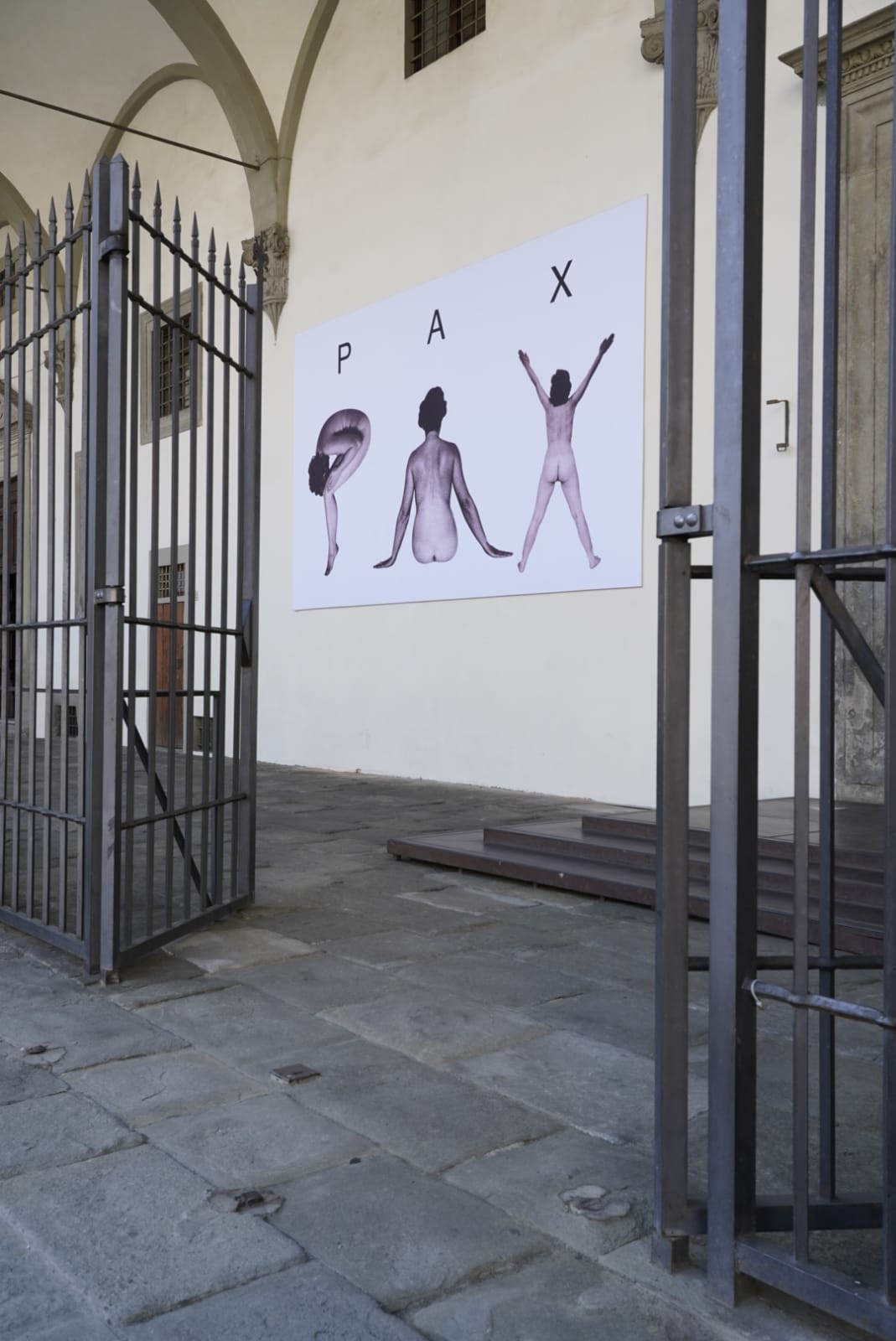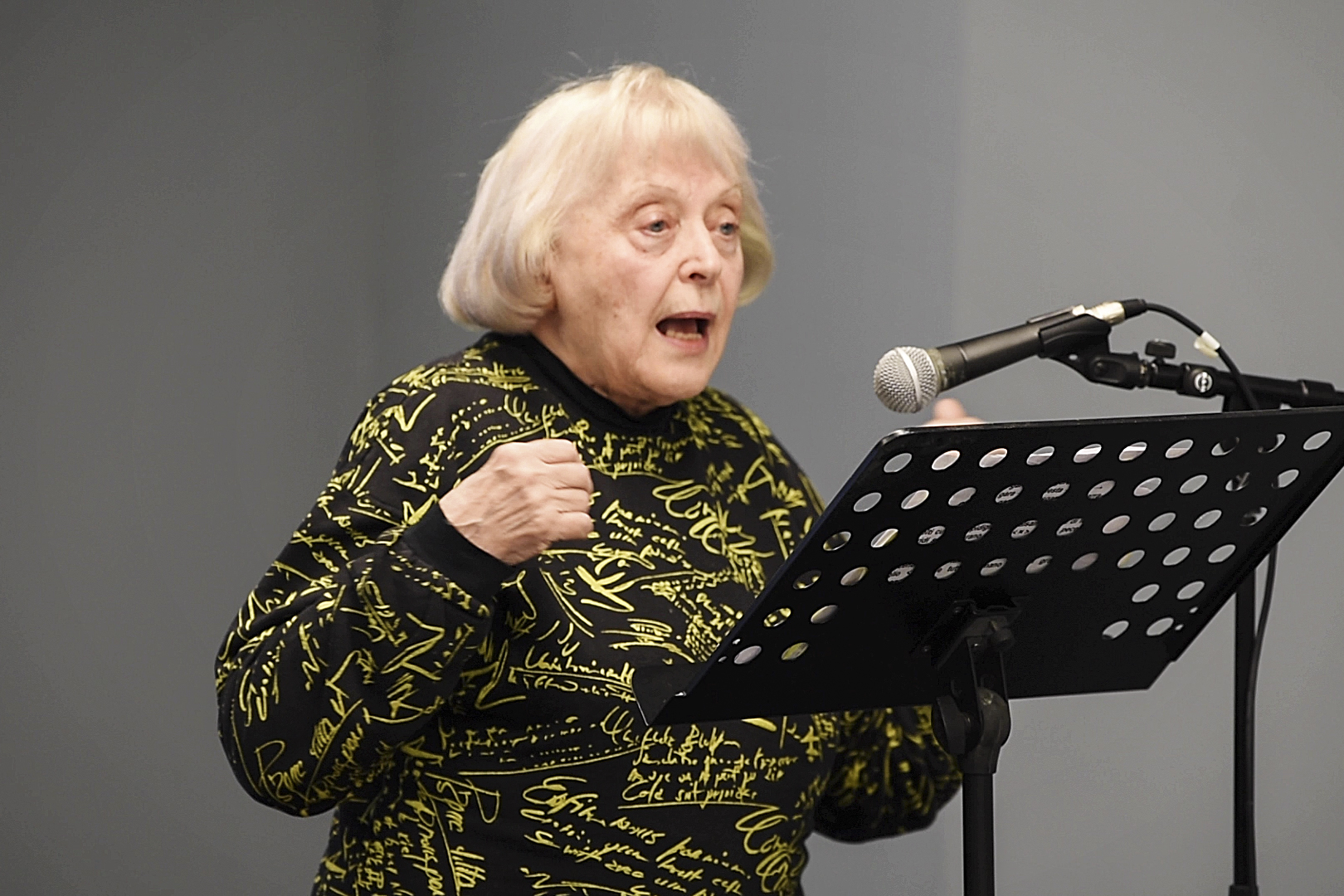Where and when
Who
Tomaso Binga
Artist
Sergio Risaliti
Director of Museo Novecento
Ilaria Bonacossa
Director of Museo Nazionale di Arte Digitale
Raffaella Perna
Professor of Contemporary Art History at the University of Rome La Sapienza
Chiara Portesine
Researcher at the Scuola Normale Superiore of Pisa
Stefania Zuliani
Professor of Theory of Art Criticism and Museum and Exhibition Theory in contemporary times at the University of Salerno
“Like a living painting, I recite the poem.” The practice of artist, poet and performer Tomaso Binga, aka Bianca Pucciarelli Menna, will be the subject of a round table to be held on Friday 18 November at 5:00 pm at the Cinema Hall of the Novecento Museum.
The meeting, moderated by Sergio Risaliti, Director of the Museo Novecento, will alternate with the interventions of: Ilaria Bonacossa, Director of the newly established National Museum of Digital Art; Raffaella Perna, Professor of Contemporary Art History at the University of Rome La Sapienza; Chiara Portesine, Researcher at the Scuola Normale Superiore of Pisa; Stefania Zuliani, Professor of Theory of Art Criticism and Museum and Exhibition Theory in the Contemporary Age at the University of Salerno. The artist will be present at the talk who, in addition to engage in dialogue with the speakers, will perform some of his famous performative poems.
Tomaso Binga, Between visual poetry, performance and feminism stems from the desire to provide an in-depth analysis of the installation of the PAX work that stands out on the external facade of the former Leopoldine, presented on the occasion of the eighteenth edition of the Giornata del Contemporaneo promoted by AMACI and in collaboration with Frittelli contemporary art and with the Galleria Tiziana di Caro.
In fact, the work refers to the series of the Mural Alphabet (1976), otherwise known as Living Scripture, which the artist had created in the Tuscan capital, with the help of his friend, artist and photographer, Verita Monselles. The series, consisting of 26 images that immortalize Tomaso Binga as he composes the letters of the alphabet with his naked body, is conceived in close relationship with previous experiments on the materiality of words. For months, the artist had to attend the Florentine studio of Verita Monselles, trying and retrying each pose to be able to create this work that is now one of the best known of the feminist art season of the seventies.
In a historical moment in which the world is shaken by wars and more than ever, multiple acts of violence (ideological and otherwise) against women are on the agenda, the Museo Novecento is confirmed as an institution sensibly tuned to emergencies and tragic conflicts of our time. In this sense, the PAX installation takes on a powerful and dual value. On the one hand, the cry of all humanity for hatred to subside and conflicts to settle down; on the other hand, in continuity with the ideas developed by the feminist movements, the work of Tomaso Binga represents the request for peace for all women harassed, trapped, killed by men and regimes, and at the same time it is a cry for freedom, affirmation the right of women to regain possession of language, their identity and their body, to think and represent themselves as active subjects of history. “We no longer want to feel like abstract entities, but physically, socially, politically human people” says Binga. A thought that is certainly a mirror of the slogan that is burning the streets of Iran these days, “Woman, life, freedom”, and that echoes in the squares all over the world.
TOMASO BINGA. Between visual poetry, performance and feminism
Intervention program:
Back to the Future: Tomaso Binga and the others…
Museums and market to rediscover female artists
curated by Ilaria Bonacossa
Since the 1990s, the market first and the institutions have subsequently focused on the rediscovery of ‘female’ artists that the market, and institutional collections had neglected, leading to a widespread phenomenon of appreciation and rediscovery. How does the history of art change by attributing the right weight to its female or non-binary half, how does the reading of the works of the protagonists of the history of art of the late 1900s change if inserted in a broader context of shared creativity?
Performance and identity research in the work of Tomaso Binga
curated by Raffaella Perna
The intervention intends to analyze the work of Tomaso Binga in the light of the Italian historical-artistic context of the 1970s, focusing in particular on the performative aspects of his research and on the links with the thought and practice of neo-feminism. Binga’s performances are compared with her verb-visual works and with the more general panorama of performative and behavioral experiences widespread among the Italian artists of her generation who share with her the urgency to work on the relationships between art, action and gender identity.
“I am paper”: poetry and writing in the work of Tomaso Binga
curated by Chiara Portesine
The speech will focus on the function of poetic “writing” in the verbal-visual production of Tomaso Binga. Starting from a comparison with the contemporary developments of Group 70 (exemplified, in particular, by the figure of Ketty La Rocca), the attention will then be shifted to the specificity of Binga’s “living writing”, investigating how the verbal and alphabetic inserts interact with the properly performative side of the work-body systematized by the artist.
Tomaso Binga out loud
curated by Stefania Zuliani
The intervention intends to highlight the value of the voice within Tomaso Binga’s performative practice, indicating its avant-garde matrices and critical and (bio) political meanings.
Ph credits
Leonardo Morfini
ADRYA







